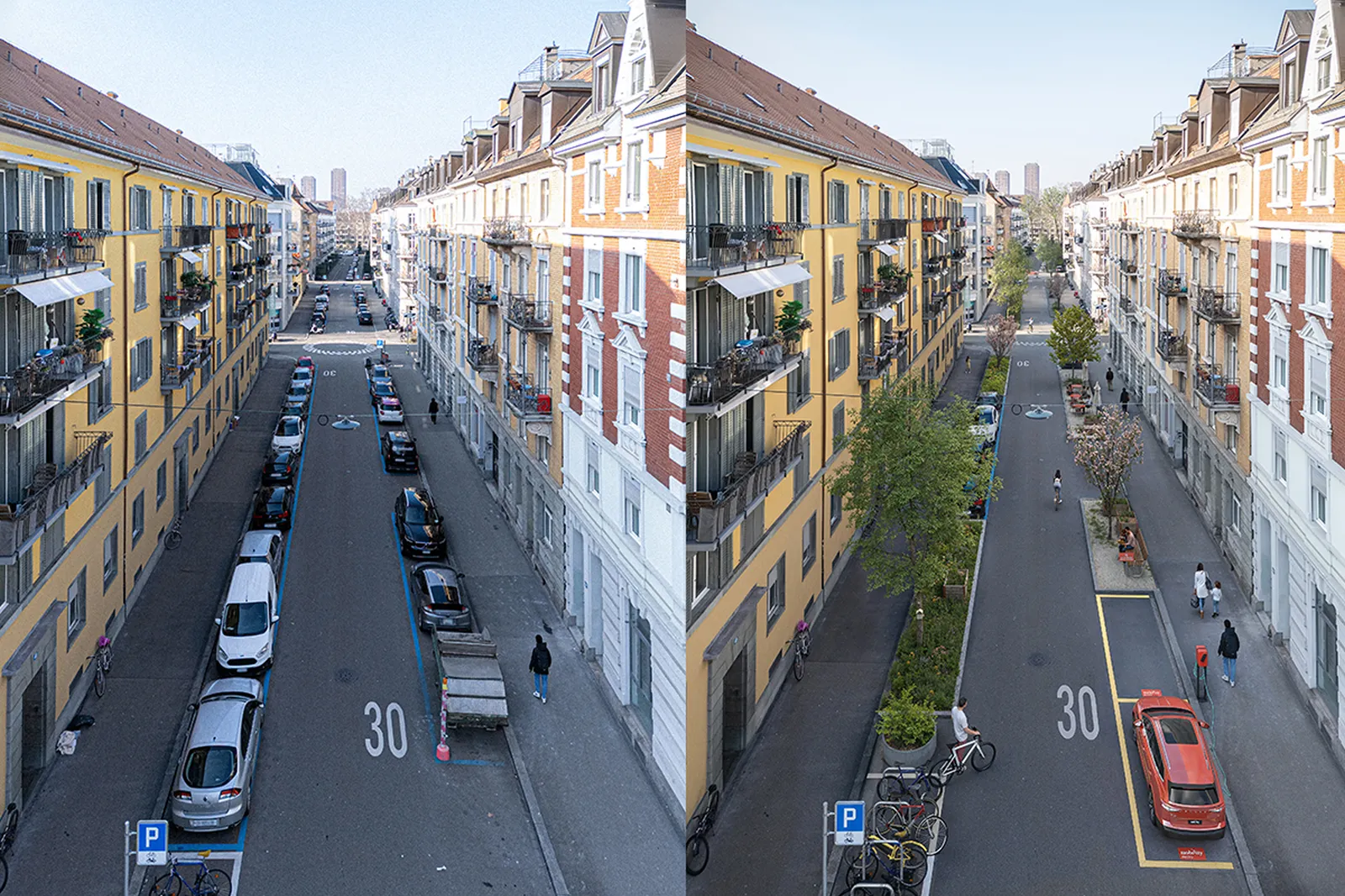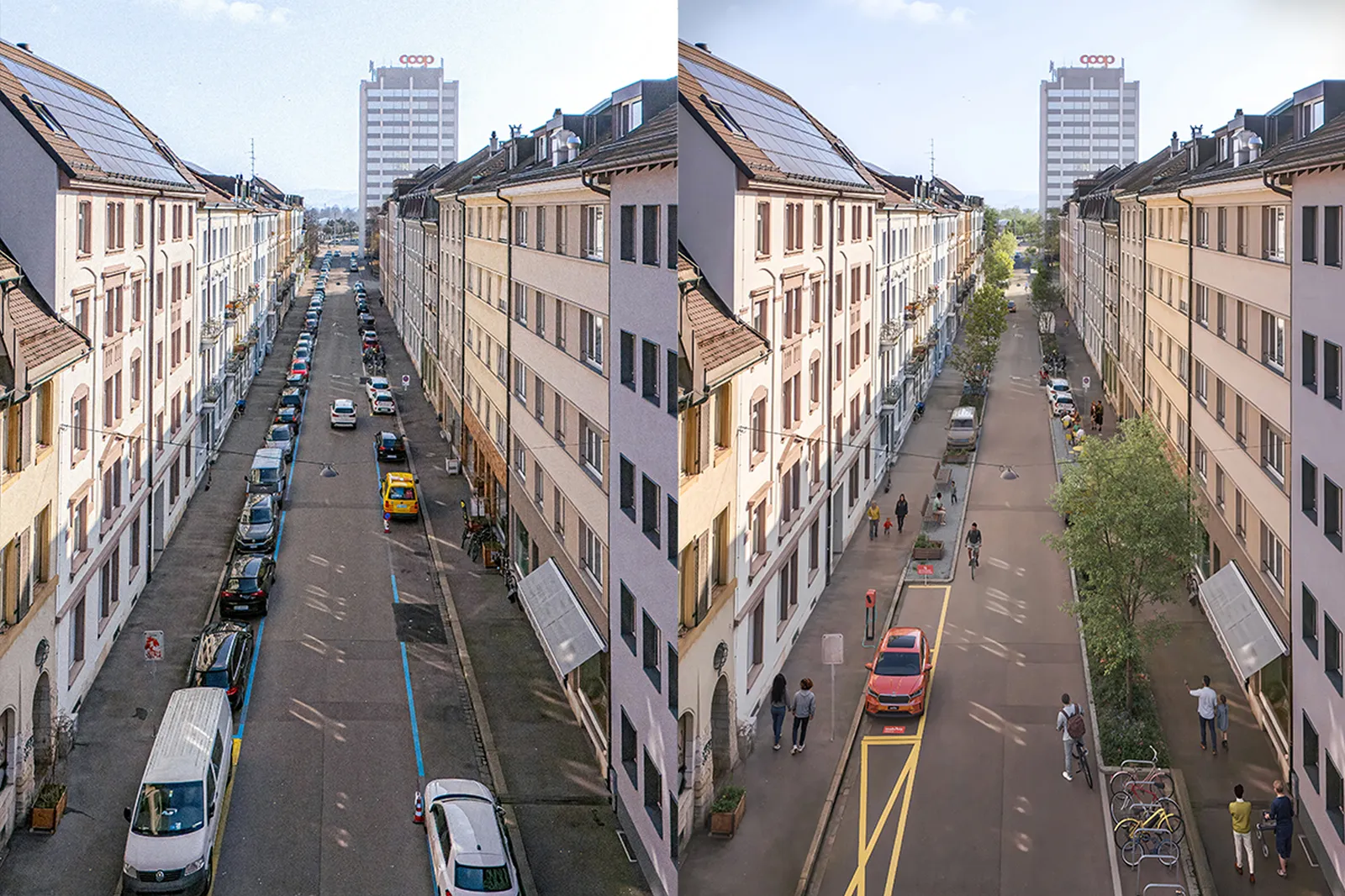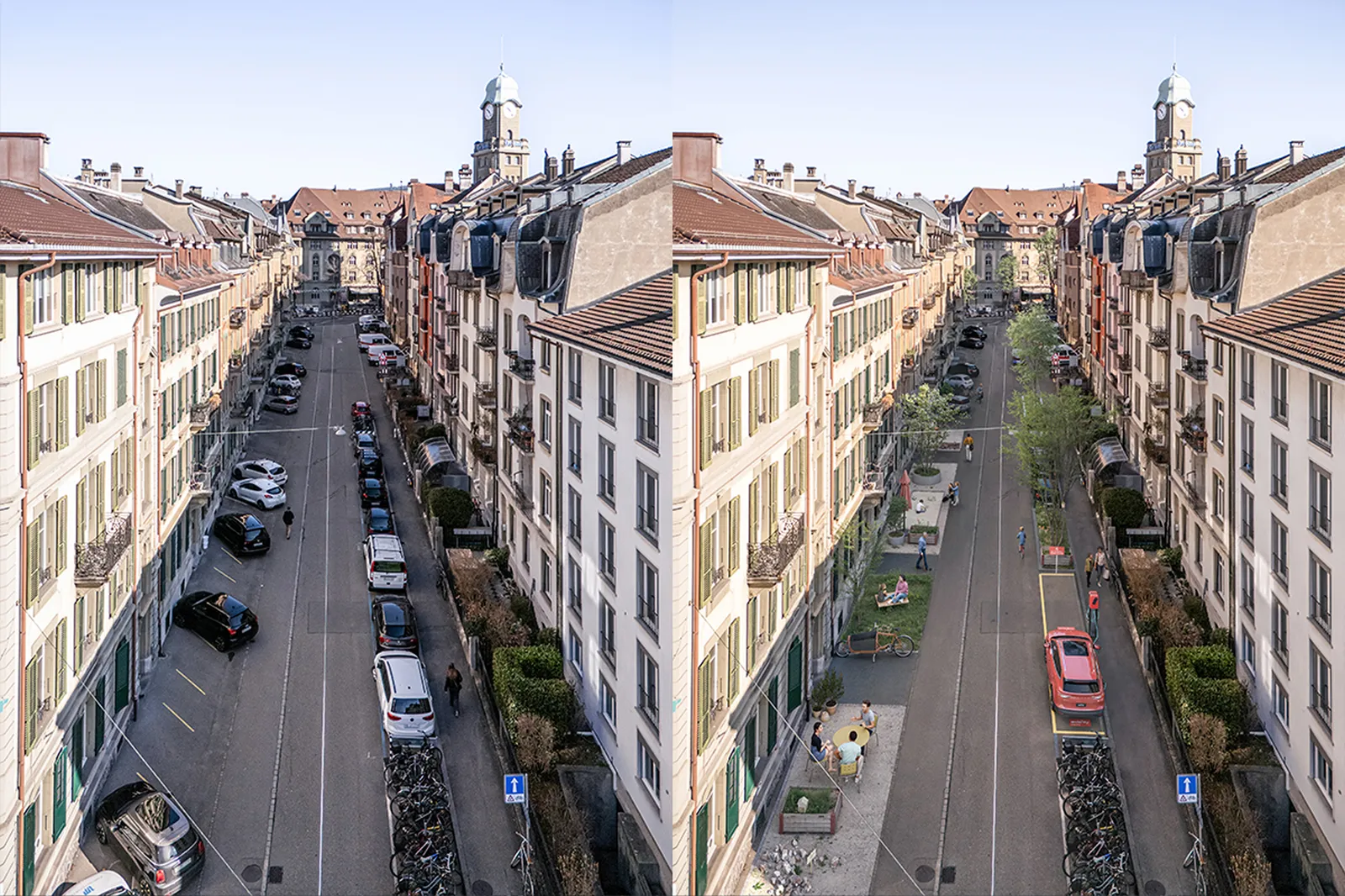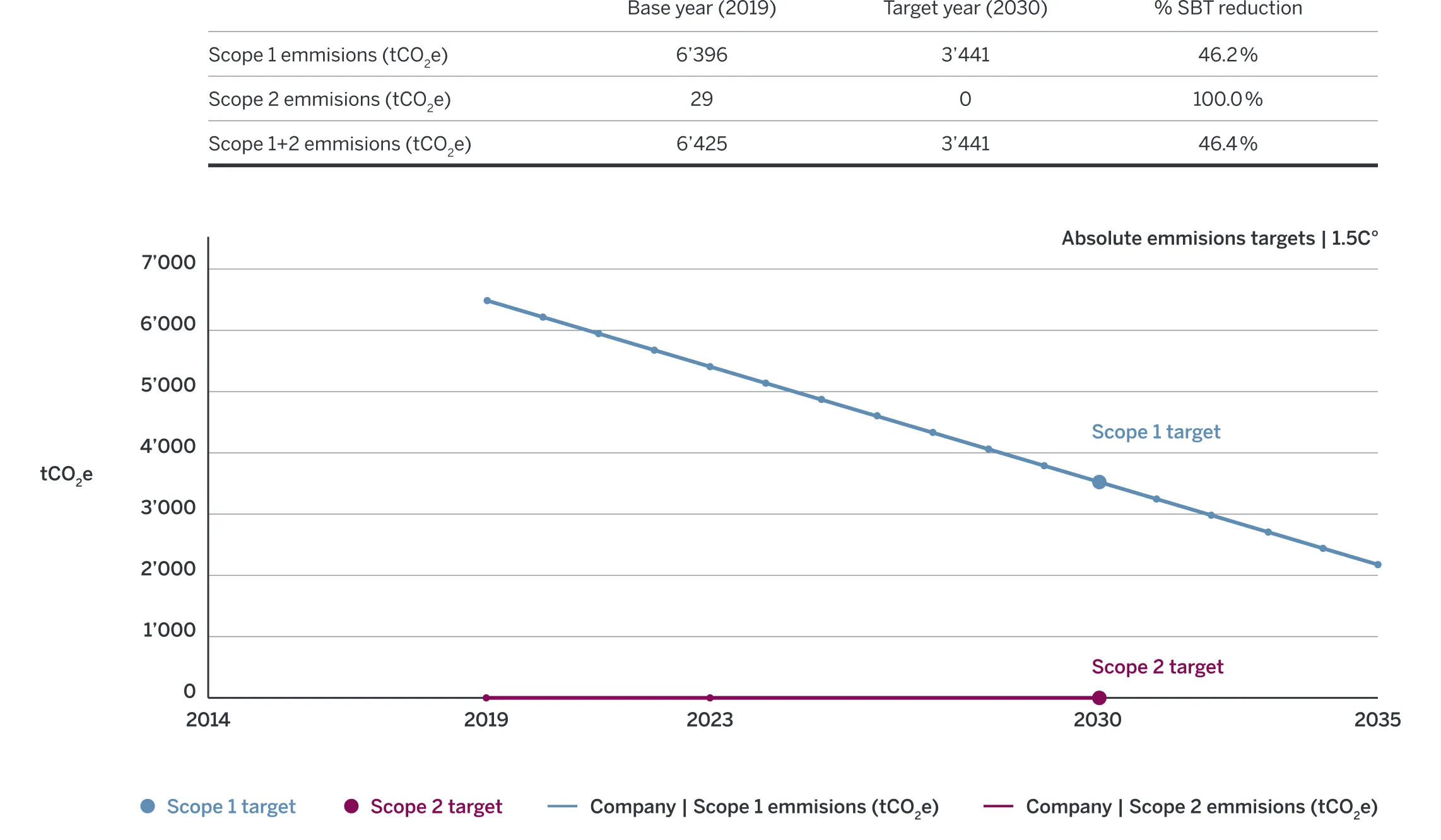432 tonnes of CO₂ saved
Last year, the Mobility Cooperative emitted 11’391 tonnes of CO₂e*. This includes not only vehicle emissions, but all of the company’s emissions, such as those caused by employee commuting. Mobility was able to reduce greenhouse gas emissions by 432.7 tonnes compared to the previous year. «This reduction is due to three factors in particular. Compared to the previous year, the leased vehicle fleet covered fewer kilometres overall. The number of kilometres travelled in fossil-fuel-powered vehicles has decreased, while the number of kilometres travelled in electric vehicles has increased,» says Roland Beyeler, sustainability officer at Mobility. «This development confirms the effectiveness of our efforts to continuously reduce our emissions. We continue to focus on strengthening electric mobility and expanding our offering in a targeted way. After all, a single shared Mobility car replaces 18 privately owned vehicles. This means that each of our approximately 3’000 cars makes a significant contribution to creating more sustainable mobility.»
However, Mobility is also tackling emissions produced by commuting and, as an employer, offers various incentives: employees receive a free half-fare travel card plus a yearly credit balance for commutes on public transport via Fairtiq. Staff who cycle to work receive a contribution towards getting their bike serviced. And if they do need to drive to work, employees enjoy free membership of Mobility’s car-sharing service and discounted rates.
* CO₂ equivalents (CO₂e) are a unit of measurement used to standardise the climate impact of different greenhouse gases. Alongside the most significant greenhouse gas released by humans, carbon dioxide (CO₂), there are also other greenhouse gases like methane and nitrous oxide.







